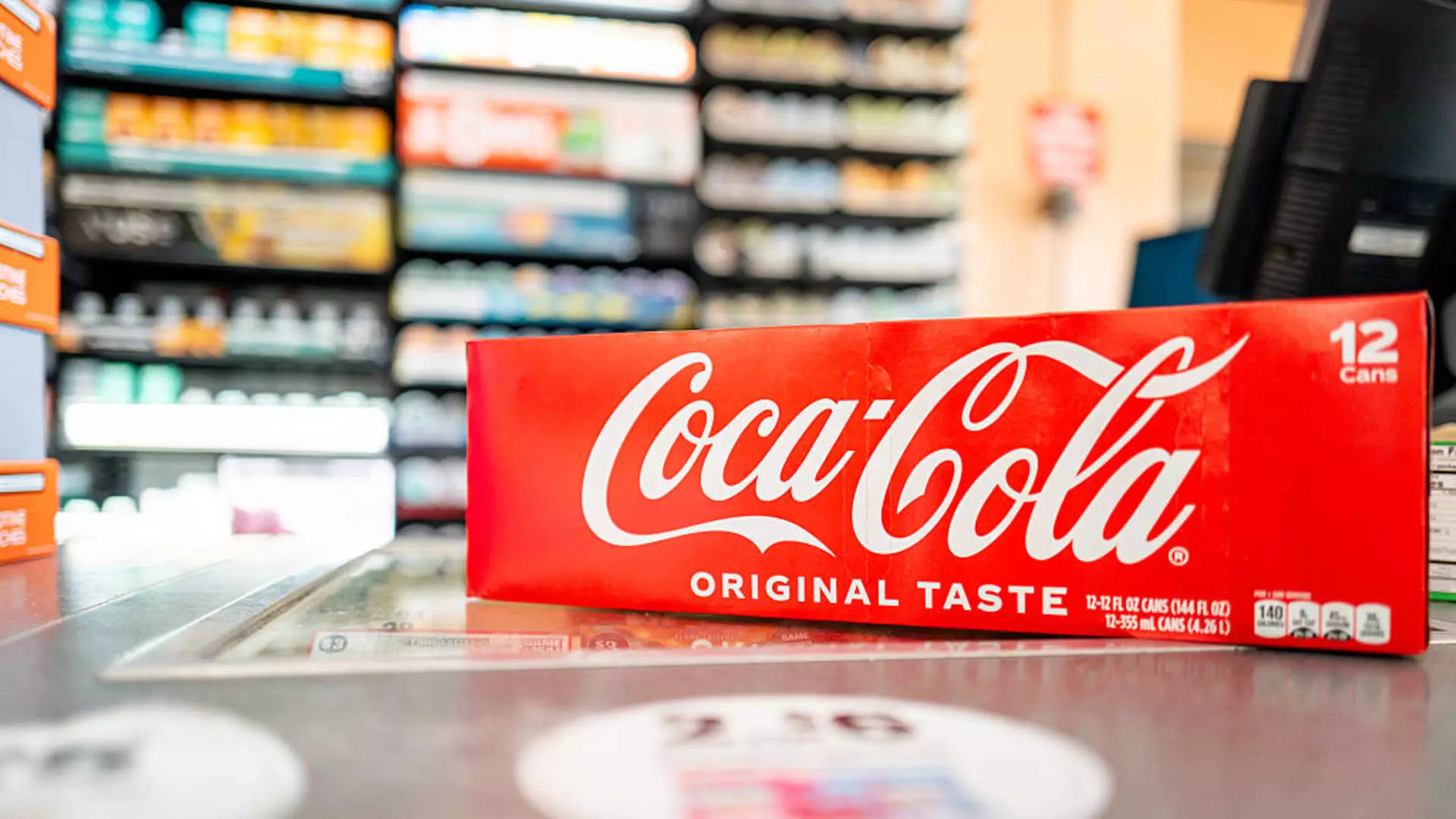Coca-Cola’s latest earnings report might seem like a victory on paper — beating Wall Street expectations with higher-than-anticipated revenue and profits. Yet, this veneer conceals a harsher reality: the underlying health of the global consumer is deteriorating, and Coca-Cola’s performance is a fragile reflection of wider economic uncertainties. While analysts focus on the growth figures, they overlook the chronic decline in core demand and the unsettling shifts in consumer behavior that threaten Coke’s long-term dominance.
The company’s reported net income of $3.81 billion, up significantly from the previous year, is a noteworthy achievement, but it’s important to contextualize these results. Much of the recent growth has been driven by strategic price hikes rather than genuine consumer appetite. Adjusted earnings per share of 87 cents, surpassing expectations, might suggest strength, but beneath that metric lies a troubling story of volume declines and changing consumption patterns, especially in key markets like North America and Latin America.
Demand Wanes, Prices Rise — A Short-Term Fix
Despite a modest 1% increase in overall revenue, the story is complicated. The rise largely stems from price increases and currency effects rather than organic growth in consumer demand. Volume declines—1% globally—highlight the shrinking appeal of Coke’s core products. Especially worrisome is the 1% dip in North American demand, historically a bastion of stability for beverage giants, where even the most iconic soda shows signs of fatigue.
What are the implications? It’s clear that consumers, burdened by economic uncertainty and inflation, are becoming more selective with their discretionary spending. Coke’s efforts to adapt—such as marketing affordability strategies targeting lower-income groups and reducing supply in certain regions—are temporary patches rather than solutions. The decline in sales among Hispanic consumers, spurred by social media rumors, further exemplifies how fragile consumer trust and loyalty have become in today’s hyper-connected world.
A Country of Contradictions: Growth in Some, Decline in Others
Market-specific trends reveal stark contradictions. Europe, Middle East, and Africa demonstrate modest growth, with a 3% increase in volume, but this positive note doesn’t undo the broader warning signs. Latin America and Asia-Pacific continue to lag, with declines of 2% and 3%, respectively. These regions, historically fertile grounds for soft drink giants, are showing signs of saturation and shifting preferences—people are turning away from traditional sugary beverages in favor of healthier options.
Simultaneously, Coke’s diversified portfolio—encompassing juices, dairy, plant-based drinks, water, and coffee—shows mixed results. Notably, even growth segments like coffee are offset by declines in sports drinks. This diversification, while strategic, hints at brewing challenges: consumers are reconsidering their beverage choices, moving toward wellness-oriented products, and away from sugary sodas. Coke’s decision to introduce cane sugar versions of its flagship cola in the US indicates an attempt to appeal to nostalgia or perceived authenticity, but it is unlikely to reverse the fundamental decline in demand for traditional soft drinks.
Will Price and Innovation Be Enough?
Coca-Cola’s management appears to believe that innovation and pricing power can sustain itsprofits, but this optimism seems misguided when consumer loyalty continues to erode. The company has publicly maintained its 2025 organic revenue growth target of 5-6%, yet this projection ignores the ominous signs of a shifting global consumer landscape. Rising health consciousness, regulatory pressures, and economic strain suggest that Coke’s traditional model of volume-driven growth is unsustainable in its current form.
The planned launch of a cane sugar cola in the US is a symbolic gesture—an appeal to consumers craving authentic experiences—yet it risks being a superficial fix in a time when consumer preferences are fundamentally changing. The challenge is that Coke’s core identity as a sugary soft drink leader is under siege, and the strategy of incremental reforms cannot substitute for a genuine transformation of its product lineup and marketing approach.
In the end, Coca-Cola’s recent results should serve as a wake-up call. The company’s resilience in a turbulent economy is commendable, but it also underscores a critical vulnerability: the decline of the traditional soda market is not just a temporary blip but a profound transformation. Unless Coke reimagines its brand in a health-conscious world, it risks losing relevance, no matter how shiny its quarterly reports seem.

